 | Saint Paul the Apostle had shipwreck on Croatian island of Mljet, and not on Malta. This is the subject of the monumental book written in elite Latin language by Ignjat Đurđević, published in Venice in 1730. Ignjat Đurđevic was Croatian Baroque writer from the city of Dubrovnik. The island of Mljet is not far from the city of Dubrovnik. In The Geography of distinguished Armenian scholar Ananias of Shirak, written between 592-636 AD, it is stated that Saint Paul stayed in Dalmatia following a shipwreck that happened on the Adriatic island of Melita (Mljet). We owe our deep gratitude to Dr. Miho Demović (on the photo), distinguished Croatian musicologist and historian of culture, to have unveiled many unknown facts concerning the shipwreck of St Paul the Apostle on the island of Mljet on the Adriatic sea. |

benedictine monk at the Veliko jezero (Great Lake) abbey on the island of Mljet, Croatia.

Drawing in Ignjat Đurđević's book from 1730 indicating that the shipwreck of St Paul
happened on the island of Mljet, and not on Malta.
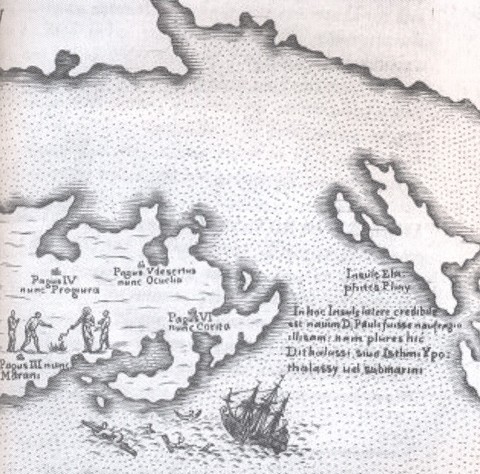
Description of St Paul's shipwreck on the island of Mljet.
Note a drawing of St Paul throwing a poisonous snake into the fire.
| Saint Paul the Apostle had shipwreck on Croatian island of Mljet, and not on Malta. This is the subject of the monumental book written in elite Latin language by Ignjat Đurđević, published in Venice in 1730. Ignjat Đurđevic was Croatian Baroque writer from the city of Dubrovnik. The island of Mljet is not far from Dubrovnik. Until recently it was believed that the first person to identify the location of Saint Paul's shipwreck near Mljet was the father of European historigraphy, the Greek emperor and historian Constanine Porphyrogenitus (905-959) who, describing the south Dalmatian islands in his work "On Administering the Empire", wrote the following:
However, scholars have recently discovered new information in The Geography of distinguished Armenian scholar Ananias of Shirak, written between 592-636 AD, which confirms that Saint Paul stayed in Dalmatia following a shipwreck that happened on the Adriatic island of Melita (Mljet). |
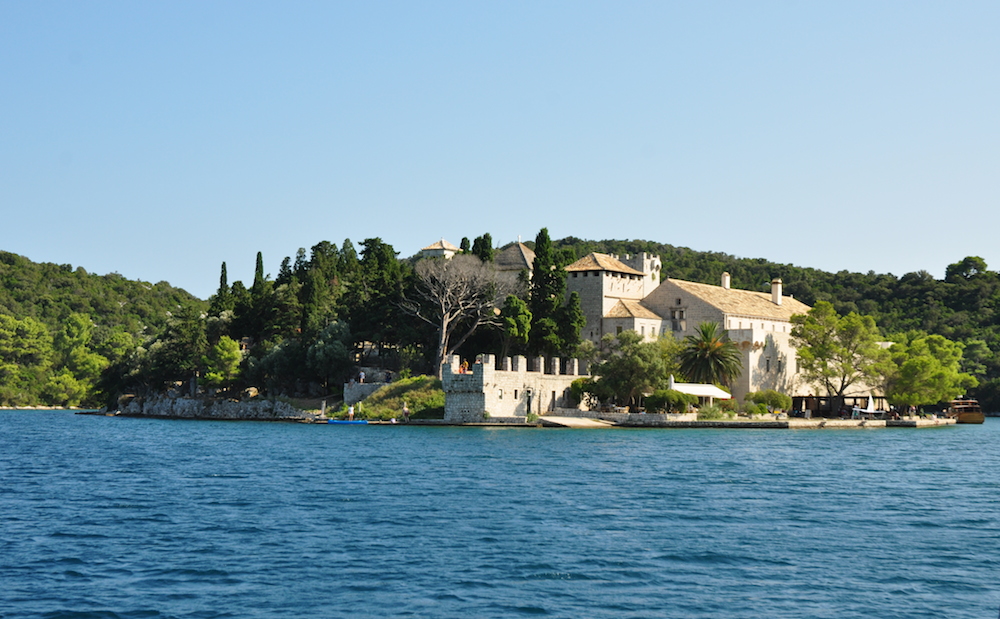 The bendictine Abbey of Sv. Marija (St Mary) on an islet on Veliko jezero (Great Lake) near the island of Mljet. Photo by Nikola Piasevoli.
The bendictine Abbey of Sv. Marija (St Mary) on an islet on Veliko jezero (Great Lake) near the island of Mljet. Photo by Nikola Piasevoli.
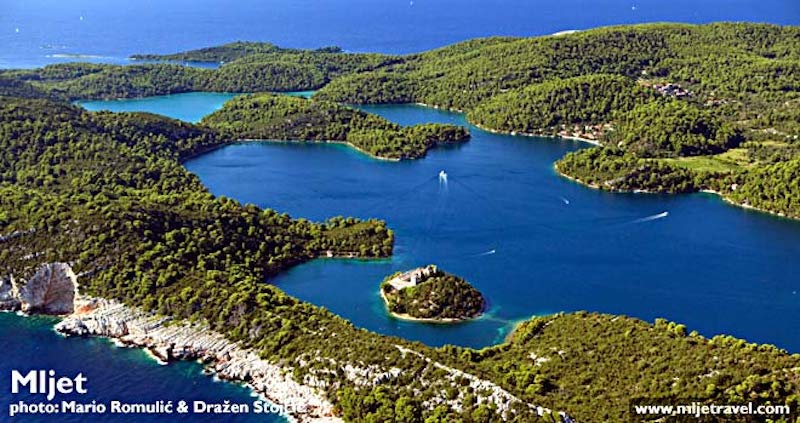
The island of Mljet in Croatia was called Melita in Ancient times.

The island of Mljet is one of Croatian National parks.
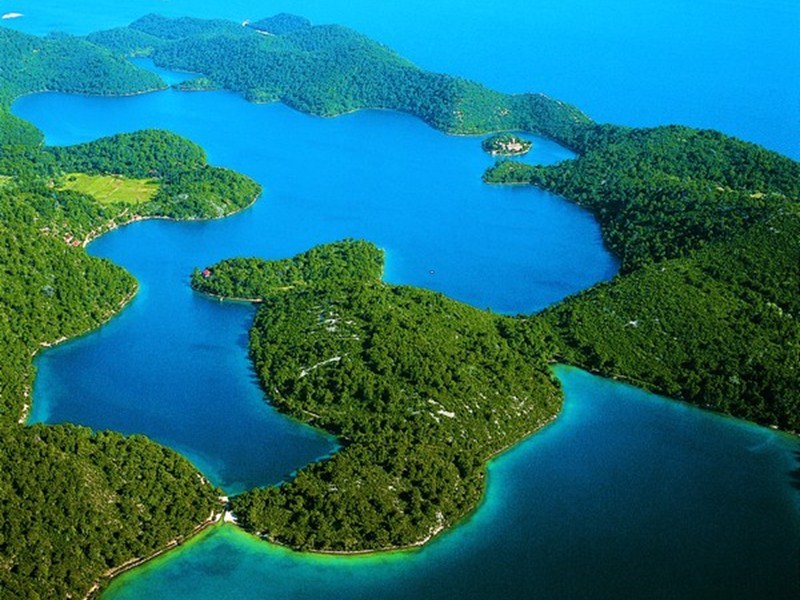
Great Lake (Veliko jezero) on the island of Mljet

| After Porphyrogenitus (10th century), the 16th century Italian historian of Dubrovnik (Ragusa) Serafino Razzi, Dominican and for a while Vicar of Capitular of the Ragusan Metropolitan see, claimed the same. He set forth the following:
Razzi thought that the shipwreck couldn not have taken place in Malta because Malta was situated in the African, instead of in the Adriatic Sea. Đurđević claimed at the beginning of his book the following It is interesting that while Malta was under the Spanish government, Đurđević was supported in his views by both English and French scholars. However, when Malta came under the English protectorate, the circumstances changed and the English writers stood up for the Maltese option. Something similar happened to the French writers when Malta was conquered by Napolen Bonaparte. |
of St Paul the Apostle on the Adriatic island of Mljet has been published in 2015:

| Zlatko Pavetić (ed): The Journey of Paul the Apostle to Rome led over the Croatian Island of Mljet (Melita) / Put apostola Pavla za Rim vodio je preko hrvatskog otoka Mljeta (Melite), Proceedings of the academic conference held on Mljet (Melita) 15 October 2011 / Zbornik radova znanstvenog skupa odr\anog na Mljetu (Meliti) 15. listopada 2011., Zagreb, 2015., ISBN 978-953-58133-0-9, 356 pp, in English and Croatian, hard cover, with color photos and maps |
zlatko.pavetic@zg.t-com.hr
| Selected articles from the Proceedings: Dr Miho Demović: PREFACE St Paul visited Croatian island of Mljet on his journey to Rome Miho-Demovic: Two millenia of St Paul's shipwreck near the Croatian island of Mljet Ignjat Djurdjevic St Paul was on the island of Mljet in the Adriatic for three months Dr. Antun Ničetić o plovidbi svetoga Pavla, Vatikanski Radio 7. kolovoza 2012., [MP3] |

| The following article by Dr. Miho Demović has been published in Zlatko Pavetić (ed): The Journey of Paul the Apostle to Rome led over the Croatian Island of Mljet (Melita) / Put apostola Pavla za Rim vodio je preko hrvatskog otoka Mljeta (Melite), Proceedings of the academic conference held on Mljet (Melita) 15 October 2011 / Zbornik radova znanstvenog skupa održanog na Mljetu (Meliti) 15. listopada 2011., Zagreb, 2015., ISBN 978-953-58133-0-9, 356 pp, in English and Croatian, hard cover, with color photos and maps We express our gratitude to Dr. Demović for his suggestion to publish this article on the web. TWO MILLENIA OF DUBROVNIK TRADITION OF SAINT PAUL'S SHIPWRECK IN THE WATERS OF CROATIAN ISLAND OF MLJET |
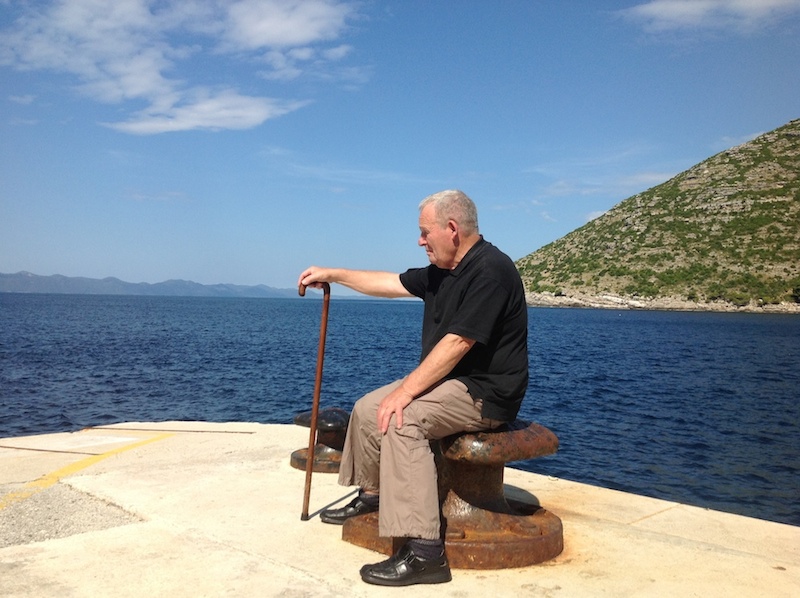
Dr. Miho Demović, distinuished Croatian scholar, looking at the island of Mljet on the left.
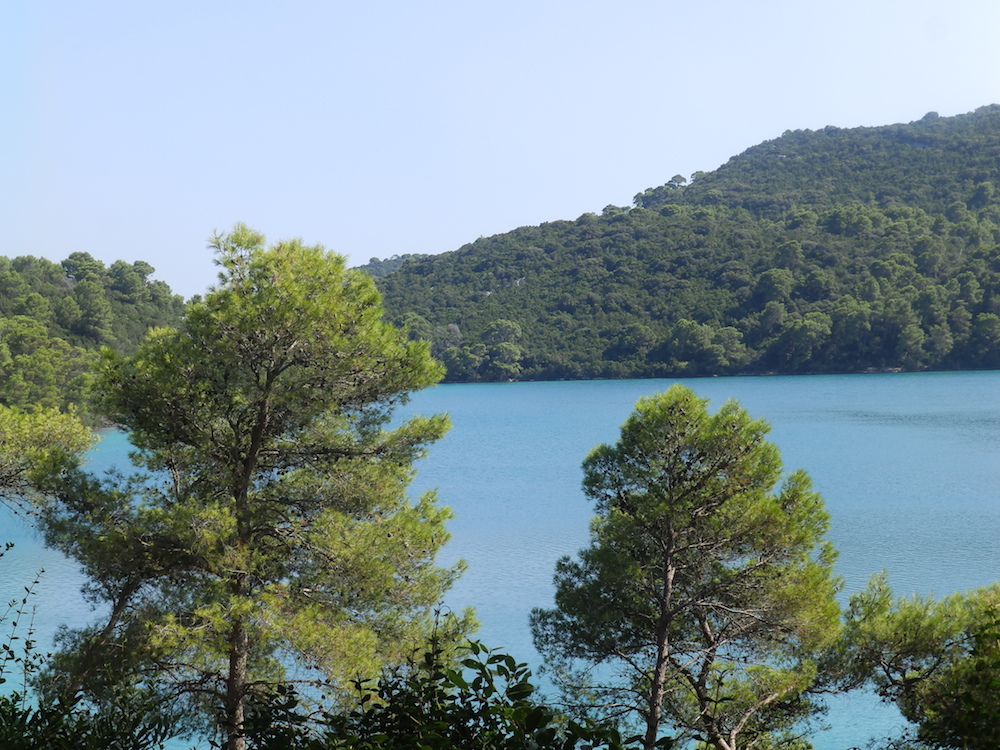
Island of Mljet, Croatia, paradise on the Earth. Photo by Nikola Piasevoli.

Mrs. Pavica Šperk Šundrica, a financial supporter of the project, and Dr. Miho Demović, initiator of the project,
in the Convent of Minor Brothers in Dubrovnik, June 30th 2015.
Formated for CROWN by Darko Žubrinić
Distributed by www.Croatia.org . This message is intended for Croatian Associations/Institutions and their Friends in Croatia and in the World. The opinions/articles expressed on this list do not reflect personal opinions of the moderator. If the reader of this message is not the intended recipient, please delete or destroy all copies of this communication and please, let us know!